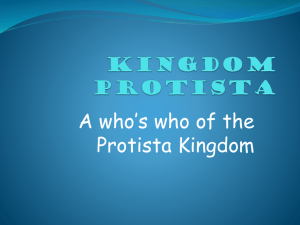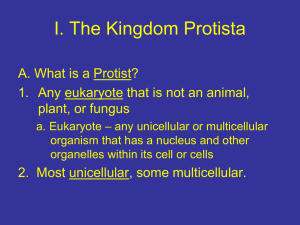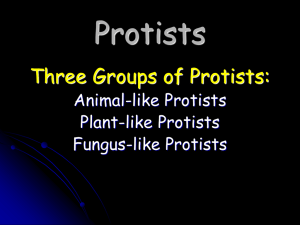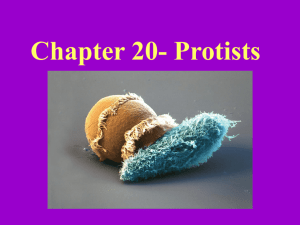Protists!
advertisement
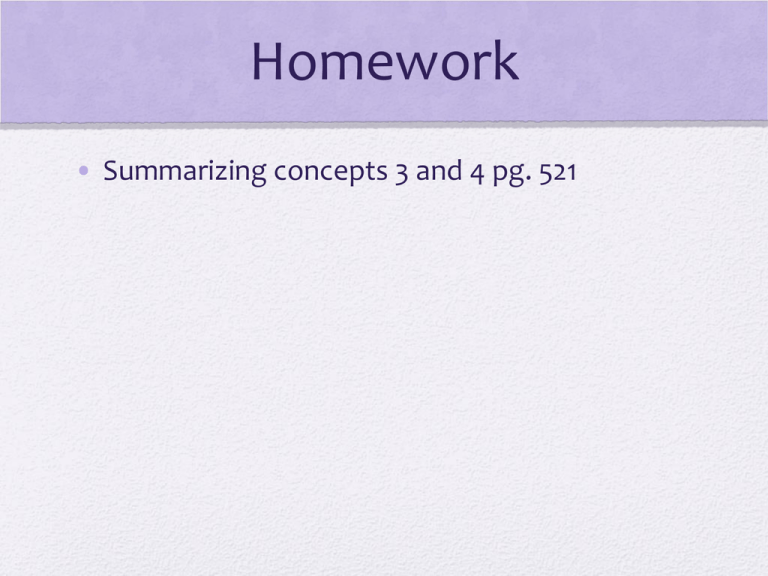
Homework • Summarizing concepts 3 and 4 pg. 521 Character Ed Objectives • Distinguish plant-like protists. • Describe how protists affect humans. Protists! Chapter 26 Plant-Like Protists • Plant-like protists are known as algae • Autotrophic • Have chloroplasts for photosynthesis • Share several features • • • • Have photosynthetic pigment chlorophyll a Aquatic Flagella Pyrenoids – storing starch and photosynthesis Algae • Four basic body forms 1. Unicellular – free-living aquatic, live together as phytoplankton • Form the base for nearly all marine and freshwater food chains 2. Colonial – individual cells acting in a coordinated manner, Volvox Algae 3. Filamentous – multicellular, slender and rod shaped and are composed of cells that are joined end to end, Spirogyra 4. Multicellular – kelp and seaweed Plant-like Protists • Green Algae • Brown Algae • Red Algae • Diatoms – have cell walls, shells • Dinoflagellates – bioluminescence, red tide • Golden algae • Eugleniods – both plant-like and animal-like, Euglena Fungi-like Protists • Slime molds and Water molds • Stationary reproductive phase in which they use spore-bearing structure called a fruiting body Slime Molds • Found on moist, decaying matter • White, yellow, or red masses of slime Water Molds • Composed of branching filaments of cells • Found mainly in bodies of fresh water Protists and Humans Protists and Humans • The produce large amounts of oxygen • Autotrophs – produces • Symbiotic relationship with coral – give them their color and carbon supply Industry • Food – seaweed, sushi • Byproducts – • Alginate – cosmetics, various drugs, stabilize ice cream • Carrageenan • Agar – petri dishes Health • Can also cause diseases • • • • Malaria Sleeping Sickness Giardiasis Trichomoniasis




